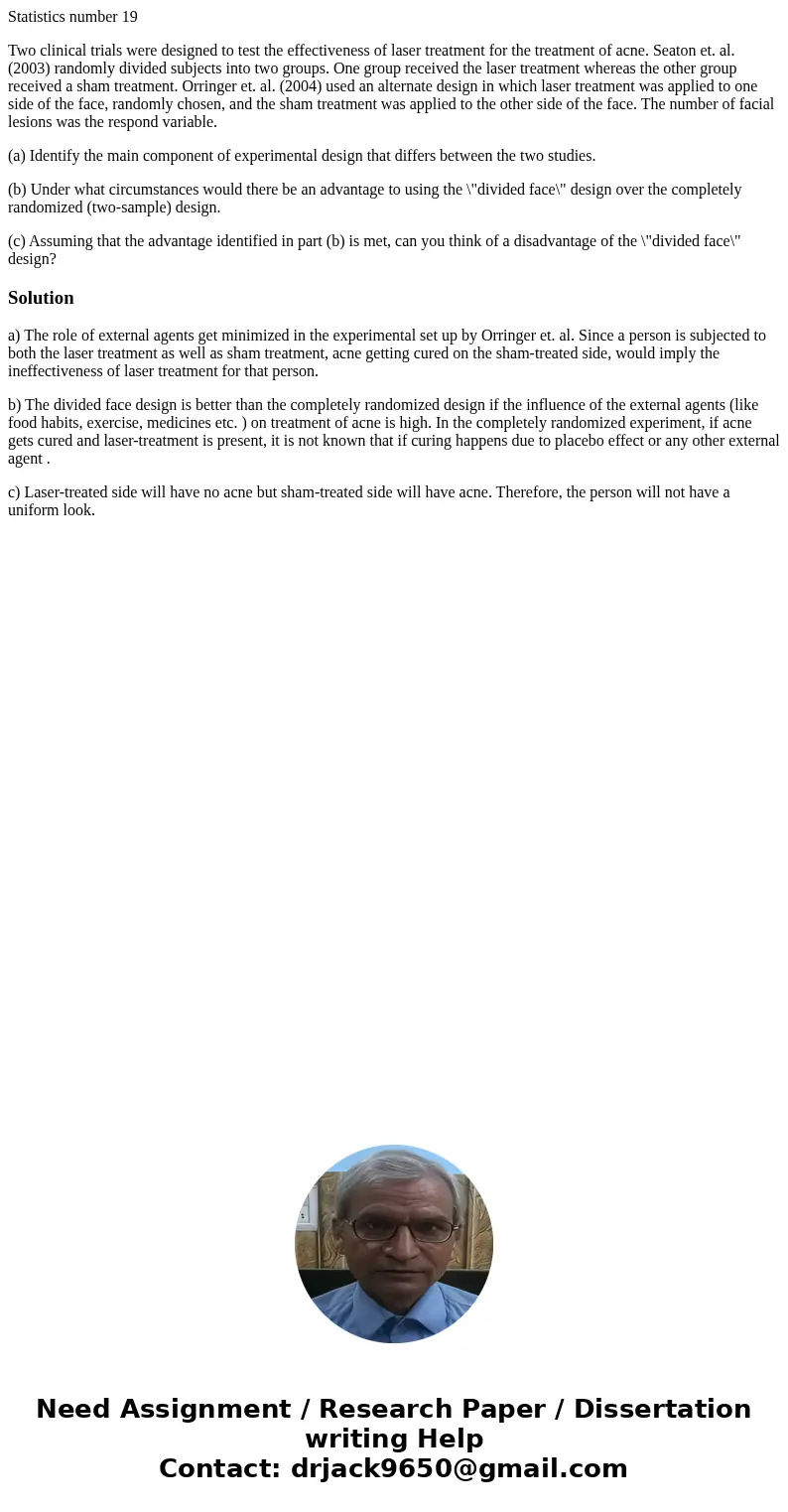Statistics number 19 Two clinical trials were designed to te
Statistics number 19
Two clinical trials were designed to test the effectiveness of laser treatment for the treatment of acne. Seaton et. al. (2003) randomly divided subjects into two groups. One group received the laser treatment whereas the other group received a sham treatment. Orringer et. al. (2004) used an alternate design in which laser treatment was applied to one side of the face, randomly chosen, and the sham treatment was applied to the other side of the face. The number of facial lesions was the respond variable.
(a) Identify the main component of experimental design that differs between the two studies.
(b) Under what circumstances would there be an advantage to using the \"divided face\" design over the completely randomized (two-sample) design.
(c) Assuming that the advantage identified in part (b) is met, can you think of a disadvantage of the \"divided face\" design?
Solution
a) The role of external agents get minimized in the experimental set up by Orringer et. al. Since a person is subjected to both the laser treatment as well as sham treatment, acne getting cured on the sham-treated side, would imply the ineffectiveness of laser treatment for that person.
b) The divided face design is better than the completely randomized design if the influence of the external agents (like food habits, exercise, medicines etc. ) on treatment of acne is high. In the completely randomized experiment, if acne gets cured and laser-treatment is present, it is not known that if curing happens due to placebo effect or any other external agent .
c) Laser-treated side will have no acne but sham-treated side will have acne. Therefore, the person will not have a uniform look.

 Homework Sourse
Homework Sourse